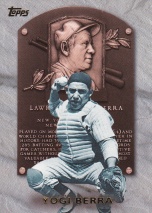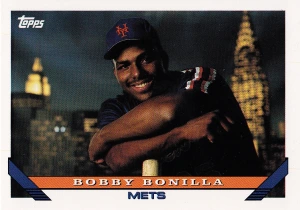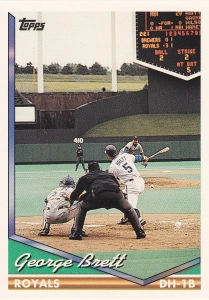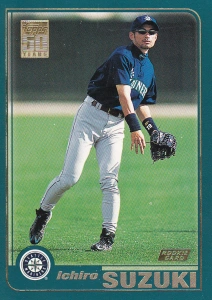
So the last part of my All-Star weekend was, of course, the All-Star Game. This was the cap of a great weekend for me. When it was announced that Cincinnati was getting the 2015 All-Star Game, my Dad and I decided that we’d go. We had gone to the game in 1988 when I was 8 years old, so this was a special thing for both him and me.
I don’t think there was any way the All-Star Game could beat the Home Run Derby. The energy in the building when Todd Frazier won was palpable – it was probably the coolest event I’ve ever been too live. At least that I can remember. I did go to game 2 of the 1990 World Series, which was a walk-off, extra-inning win. But I was 10 years old and I only remember snippets of it.
The pre-game festivities did give the Derby a run for its money; they were amazing. We got there about 5:45, so it started out with watching batting practice. Fox does put some of their broadcast interviews on the big screen, which keeps it interesting. At 7:30, the pre-game show ended and the National broadcast started, hosted by Thom Brennaman. The first thing was a tribute on the scoreboard showing the voting results of the “Franchise Four” for each team. 116 players from 29 franchises were put onto the video board. Well, I think it was actually 114 players. The first thing that stuck out to me was that Nolan Ryan made it on with 3 different teams (Angles, Astros, Rangers). The other thing was the Yankees top 4. Babe Ruth, Lou Gehrig, Mickey Mantle and Joe DiMaggio – I think this was the right decision, however, I was curious to see if Derek Jeter would get the vote since he’s been so recent. My dad and I were talking about it – we actually think Yogi Berra would be next, and then Whitey Ford and Jeter would be really close.
I said 29 teams, because they held the home team for last. This was where the “controversy” came in, as MLB honored Pete Rose as one of the Reds’ Franchise Four. Johnny Bench, Barry Larkin, Joe Morgan all came out, with Rose held for last. Now, I am anything but a Pete apologist; to me he’s lived a lie for so long that I think you can’t trust anything he says about his situation. I cringe when so many people from my hometown Cincinnati argue so vehemently for him. I can’t count how many times I’ve heard some guy in Cincinnati call into a talk show and argue that Pete should be let back in to baseball, and how they think he’s an example for their kids. Pete Rose is not a good example for anybody’s kids. He’s a guy with demons, and I think his fame enabled him to get through his life without every truly staring them down. He’s an habitual liar, a convicted tax cheat, he had a child outside of his first marriage, and he broke the most important rule in baseball. Sprinting to first base after getting a walk doesn’t erase all that and make me want to hold him up as an
That said, he has a special place in Cincinnati history, and he did accomplish all those amazing things. In my mind, I can separate the two things (though if you can’t tell from above, I am still bitter from defending him to my friends for many years). I do hope baseball finds a way to reinstate him for things like this. He doesn’t deserve to be on the decision-making side, but there’s no reason he can’t be a promotional figure for the Reds and Phillies. He got about a 2 minute ovation, and it was cool.

After that, MLB brought out the greatest living foursome. This was also decided by an online fan vote. Bench made his second appearance here (and he changed blazers in between!); he was one of the 4 voted in along with Hank Aaron, Willie Mays and Sandy Koufax. My dad and I had a moderate debate about it; he thought the picks were perfect. Aaron and Mays were slam dunks, but I would have picked Rickey Henderson and Barry Bonds over the others. Though I get why Bonds was never going to get voted in. So if you eliminate him, I’d have gone with Tom Seaver. I do agree with my dad, though – the picks may not have been correct in my mind, but they were perfect for the event. There’s something to the greatest living players being guys who are older. Bench was the only player on that group who played in the 1980’s, and he retired in 1983. Those 4 guys represent baseball royalty as much as anyone (Yogi Berra also comes to mind), particularly since Ernie Banks just passed away.

Koufax then threw the first pitch to Bench. Bench has the obvious Reds connection, but Koufax did pitch for a year at UC. I was doing quick math in my head and guessed since his last year was 1966, Koufax was probably a little over 80. I was a little off – he’s 79 – but he threw a strike and in general looks amazing for his age.
In between the Franchise Four and the Living Legends, it was time for the more standard pre-game stuff. Leo Welsh, who sings the National Anthems for the Columbus Blue Jackets, sang “O Canada”. Ciara, who apparently is a Grammy-winning artist, sung the Star Spangled Banner. I felt old because I had no clue who she was (I’ve since learned she’s dating Russell Wilson), but she did a good job. They had 4 fighter jets, U.S. Navy FA-18 Super Hornets, do a flyover. That’s always very cool and it’s amazing to me how they time it.
The game itself was fun, but not the most dramatic All-Star Game out there. If you’re reading this, you’re probably a baseball fan and you undoubtedly know the American League won, 6-3. Mike Trout lead off the game with a home run, and while the NL tied it up, the junior circuit always seemed in control. Todd Frazier didn’t reproduce his HR Derby magic – he went 0-3. That was OK, though, as the hometown fans cheered him loudly for each of those 3 at bats.
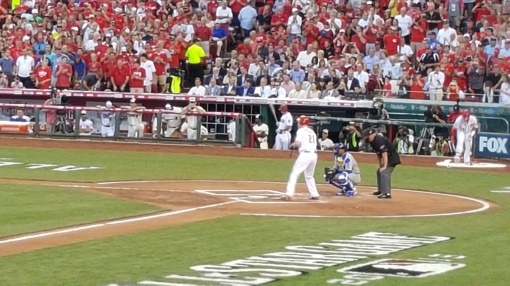
The most exciting moment for me was when Aroldis Chapman came in. It was 6-2 when he entered the game in the top of the 9th, and they messed up his introduction music. But that didn’t matter. He struck out the side, with 12 of his 14 pitches registering triple digits.

Trout of course won the MVP – and he is now the first player to win the award back-to-back. He won this car, which was being showcased at Fanfest earlier in the week. My son loved this car, because he’s 3 and he thinks it belongs in the Cars movie.

All in all – it was a great showcasing of Cincinnati. My team stinks this year, but the city did a great job hosting and everything I heard was rave reviews. My dad and I went to Mike and Mike on Monday morning, and the lines were ridiculous. They said it was the largest showing they’d ever had for a traveling event, and I believe it. It showed how excited the city was for this event in general.





